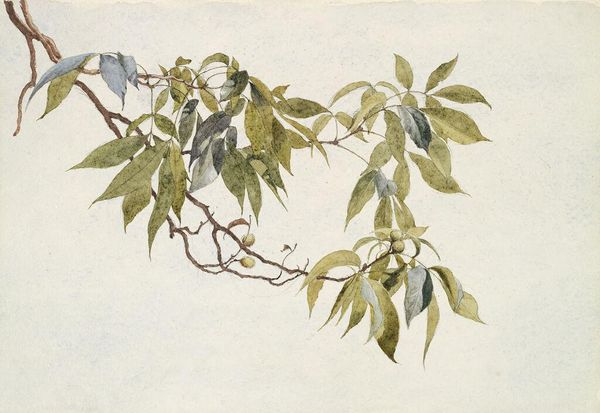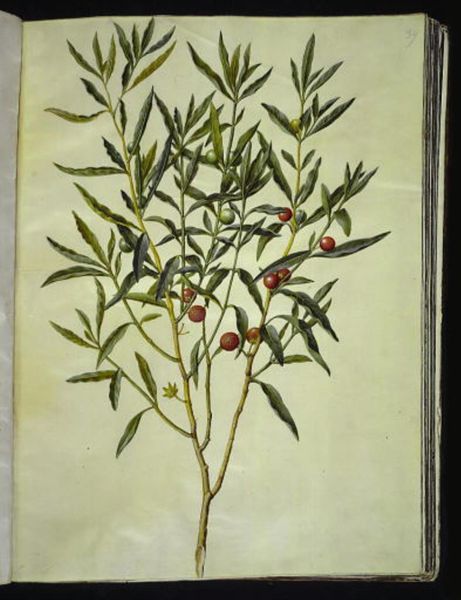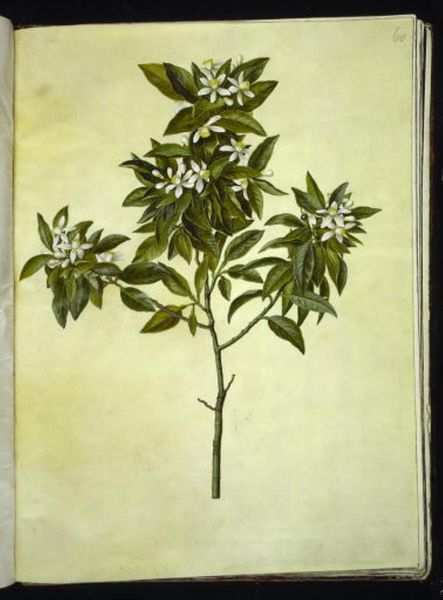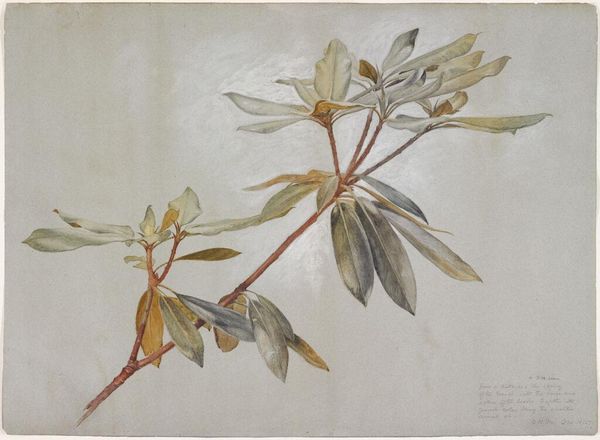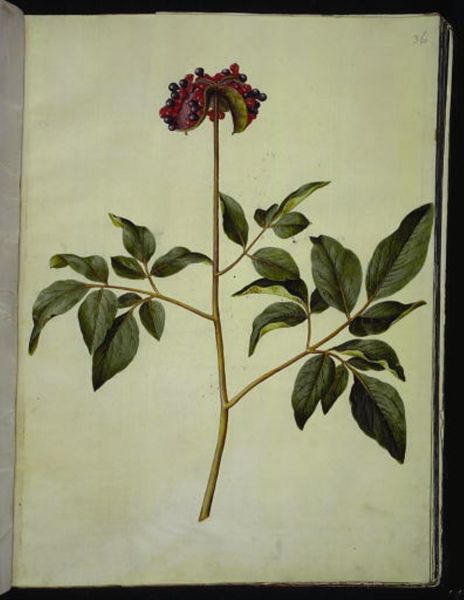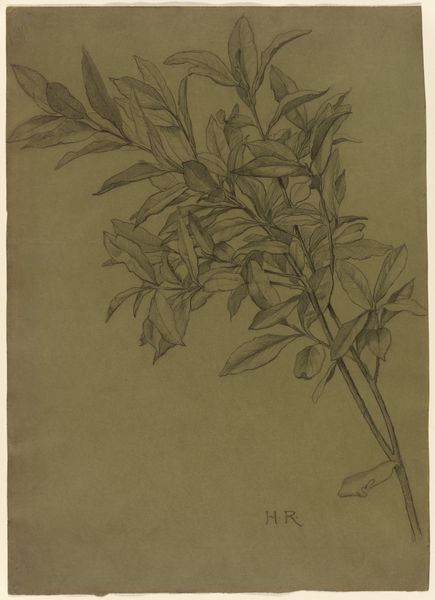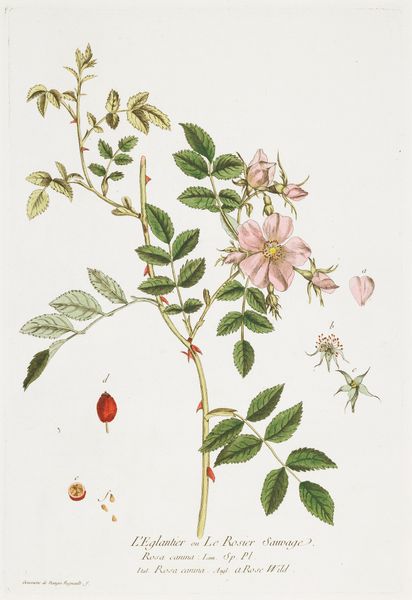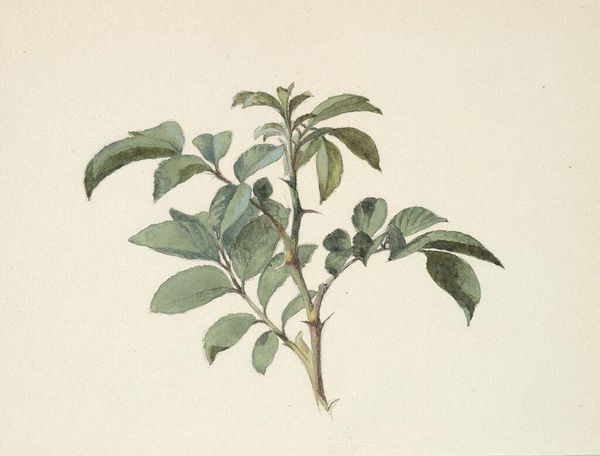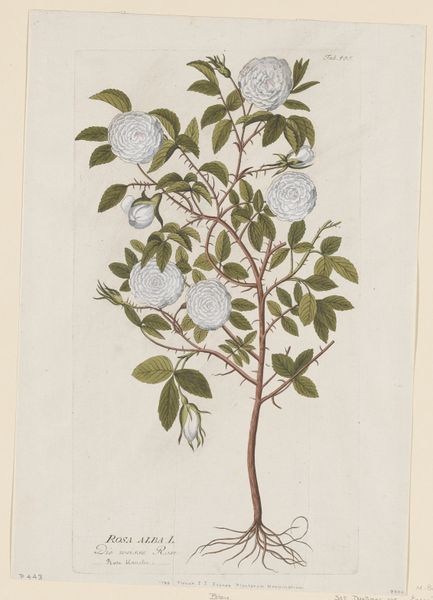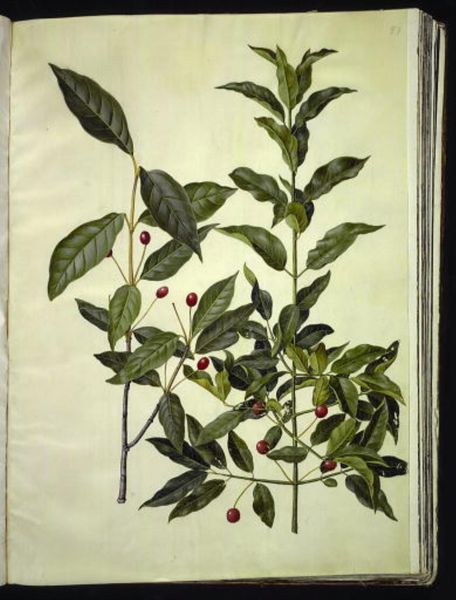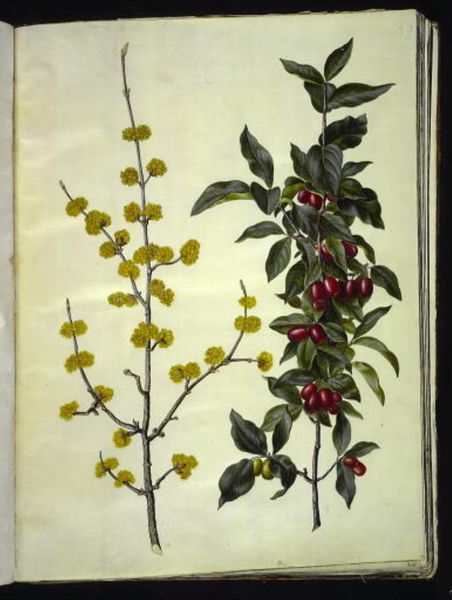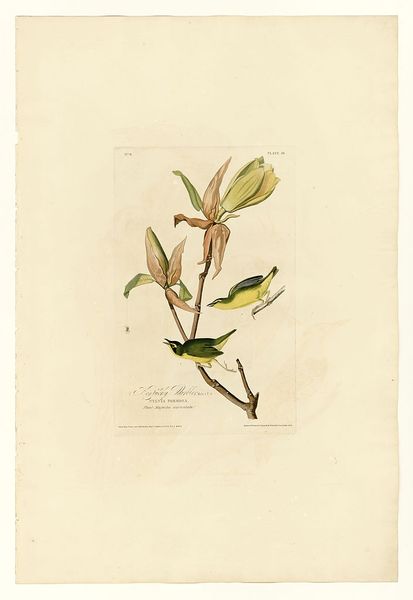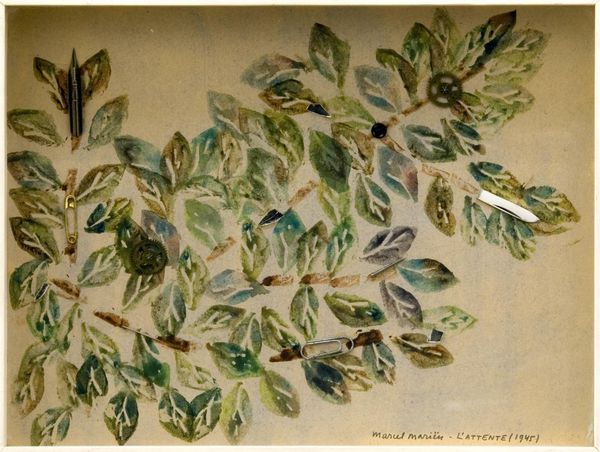
Dimensions: 20 5/8 x 14 5/8 in. (52.4 x 37.1 cm)
Copyright: Public Domain
Curator: This is a watercolor botanical drawing titled "Cherry Laurel (Mock Orange) Bough," created between 1842 and 1878 by Mary Russell Smith. Editor: It’s wonderfully delicate. The interplay of light on the leaves gives them an almost luminous quality, don’t you think? I'm immediately struck by its peaceful, almost hushed atmosphere. Curator: I find it fascinating how Smith utilized plein-air techniques to capture the natural world. This allows us to explore the material conditions surrounding its production. Were these studies done for scientific classification, or as artistic exercises, reflecting broader societal interests in botany and natural history? Editor: Looking at the precise rendering of each leaf, each berry, there's a real harmony in the composition. Smith’s subtle use of color is superb. How the greens graduate, interplaying between the almost black berries. It's beautifully balanced. Curator: The watercolor medium itself becomes significant here. How the choice of this delicate, almost ephemeral medium is significant to our interpretation of gendered work that still permeates how we study fine art and what would have been seen as decorative or purely aesthetic craft production. The drawing is signed as well - can we read that against ideas of mass consumption and authorship that rose to the fore during that era? Editor: I see your points about social context but remain drawn to how the formal choices speak. The soft textures and light palette invoke an ideal, almost romantic representation of nature. How she’s carefully observed and translated real elements to convey tranquility. It is beautiful craftsmanship of light. Curator: Right, it provides us insights into Victorian-era social attitudes, artistic production, and the evolving relationship with the natural environment. It pushes us to consider the labor involved. Editor: I suppose even I can acknowledge there's more here than meets the immediate eye. I appreciate the more complete picture you have sketched with considerations that range beyond formal choices. Curator: Thank you. By exploring these elements, hopefully our listeners might understand Smith's work as both an aesthetic achievement, but also a cultural artefact rooted within production and class!
Comments
No comments
Be the first to comment and join the conversation on the ultimate creative platform.

